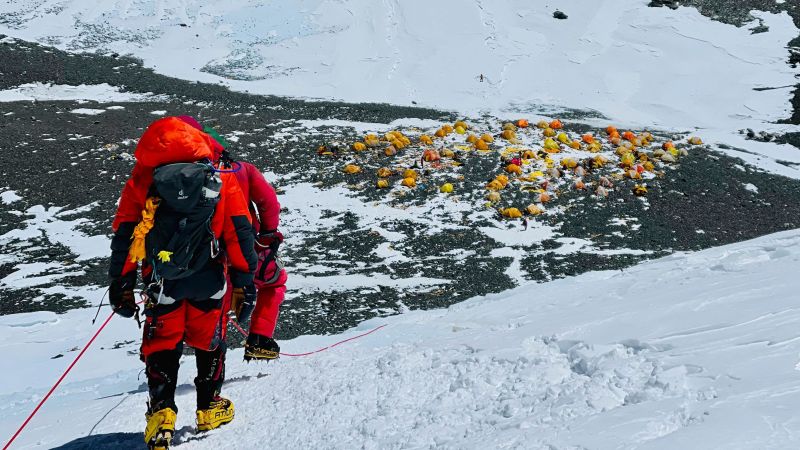They could build a train track, or zip line, up and down the mountain. A zip line would make waste disposal easier :)
What would be the terminal velocity of the poop sliding down a zip line? I can just imagine it hitting a wall at the end and exploding 😅
Roughly the airspeed of an unladen swallow.
Just tell everyone to poop at the summit. It’ll make the mountain taller and bring in more people.
Apparently, sh.itjust.dont.work (on everist)
The fabulously beautiful planet Bethselamin is now so worried about the cumulative erosion by ten billion visiting tourists a year that any net imbalance between the amount you eat and the amount you excrete while on the planet is surgically removed from your body weight when you leave: so every time you go to the lavatory there it is vitally important to get a receipt.
This is the best summary I could come up with:
Those hoping to climb Everest this year will have to make some slight adjustments to their packing list, as new rules now mandate that climbers bring their excrement down with them from the world’s highest peak, in a bid to tackle pollution.
With gear, food, supplemental oxygen, Sherpa guides and more, it costs upward of $35,000 to take on the mountain.
But the world’s highest peak has a poop problem, driven by the number of visitors, and the harsh conditions on the mountain, which interfere with the degradation process.
Jinesh Sindurakar of the Nepal Mountaineering Association told CNN that an estimated 1,200 people will be on Everest this season.
“Each person produces 250 grams (8.8 ounces) of excrement a day and they will spend 2 weeks on the higher camps for the summit push,” Sindurakar explained, adding that each climber will be given two poop bags, which can each be used six times.
Efforts to reduce the impact of tourism on the Himalayas have stepped up, with 35,708 kilograms of waste and plastics removed from peaks including Everest, Lhotse, Annapurna and Baruntse through an initiative led by the Nepali Army, according to the Himalayan Times.
The original article contains 334 words, the summary contains 195 words. Saved 42%. I’m a bot and I’m open source!
They should just install a cable lift by now
They could always put in an outhouse, but it would be pretty cold to use. Eight Crazy Nights








